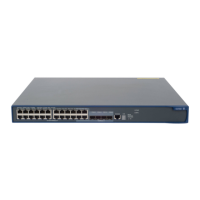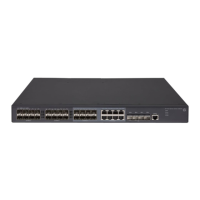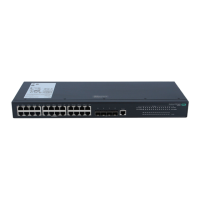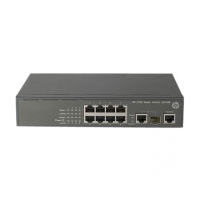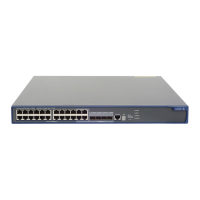357
*Destination: 2001:2::/64
Type : I Cost : 1
NextHop : directly-connected Interface: Eth1/2
*Destination: 2001:3::/64
Type : IA Cost : 4
NextHop : FE80::F40D:0:93D0:1 Interface: Eth1/2
Total: 5
Intra area: 1 Inter area: 4 ASE: 0
The output shows that a default route is added and its cost is the cost of a direct route plus the
configured cost.
4. Configure Area 2 as a totally stub area to further reduce the stub area routing table size:
# Configure Area 2 as a totally stub area on Router C.
[RouterC-ospfv3-1-area-0.0.0.2] stub no-summary
# Display OSPFv3 routing table on Router D.
[RouterD] display ospfv3 routing
OSPFv3 Process 1 with Router ID 4.4.4.4
-------------------------------------------------------------------------
E1 - Type 1 external route, IA - Inter area route, I - Intra area route
E2 - Type 2 external route, * - Selected route
*Destination: ::/0
Type : IA Cost : 11
NextHop : FE80::F40D:0:93D0:1 Interface: Eth1/2
*Destination: 2001:2::/64
Type : I Cost : 1
NextHop : directly-connected Interface: Eth1/2
Total: 2
Intra area: 1 Inter area: 1 ASE: 0
The output shows that route entries are reduced. All indirect routes are removed, except the default
route.
Configuring OSPFv3 DR election
Network requirements
• Configure router priority 100 for Router A, the highest priority on the network, so it will become the
DR.
• Configure router priority 2 for Router C, the second highest priority on the network, so it will become
the BDR.
• Configure router priority 0 for Router B, so it cannot become a DR or BDR.
• Router D uses the default router priority 1.
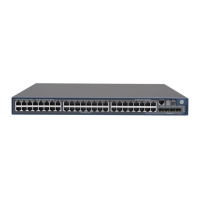
